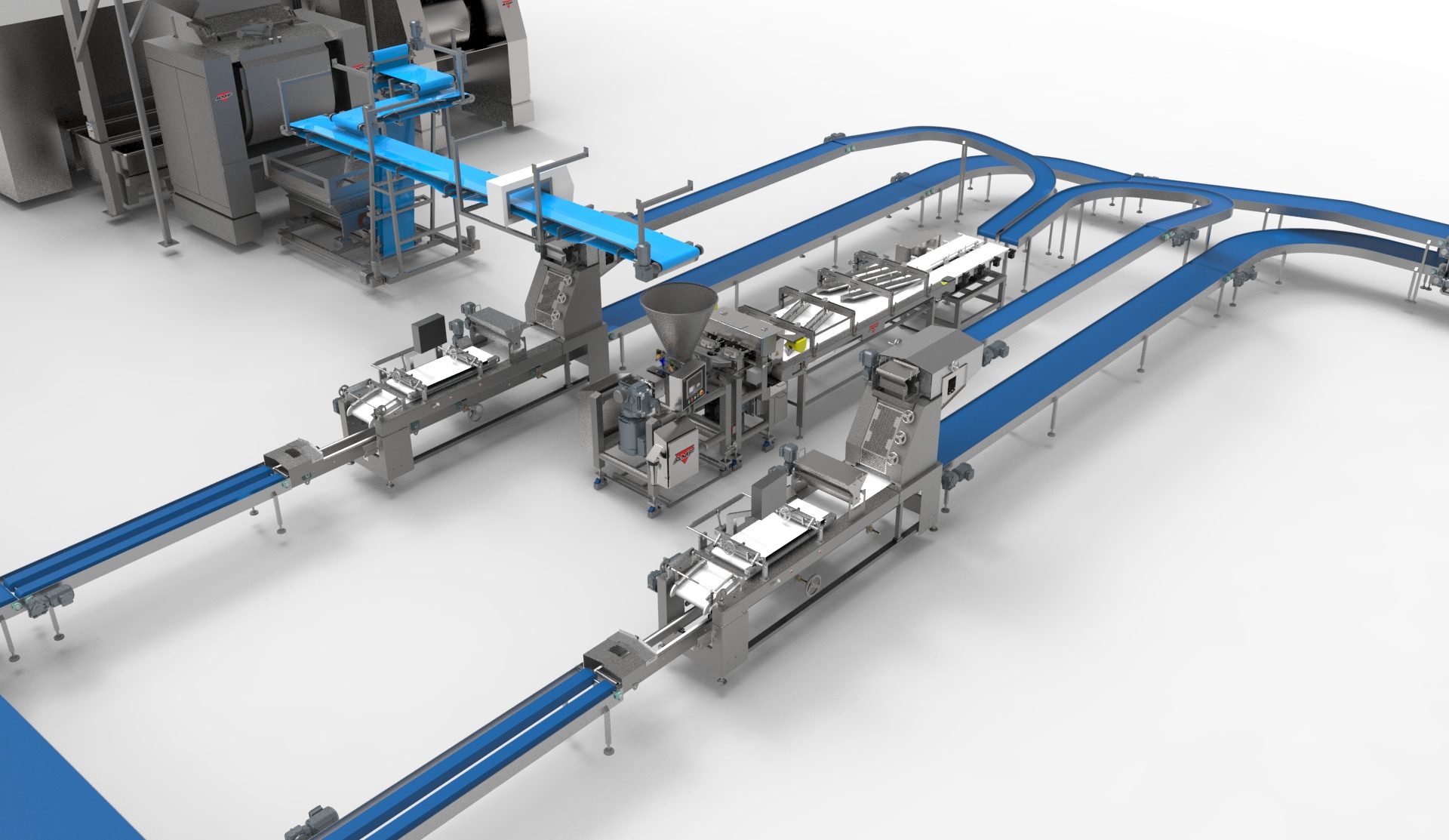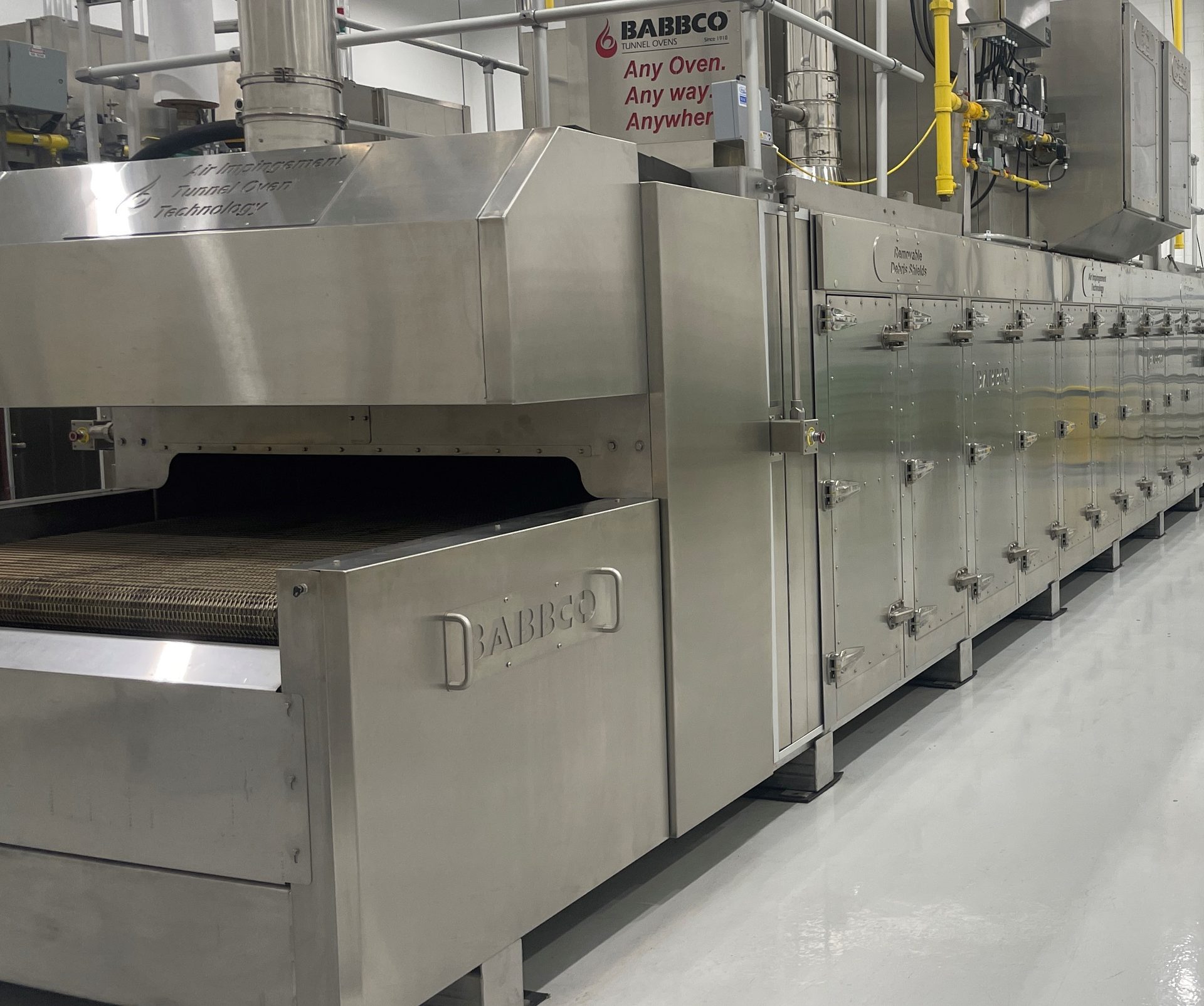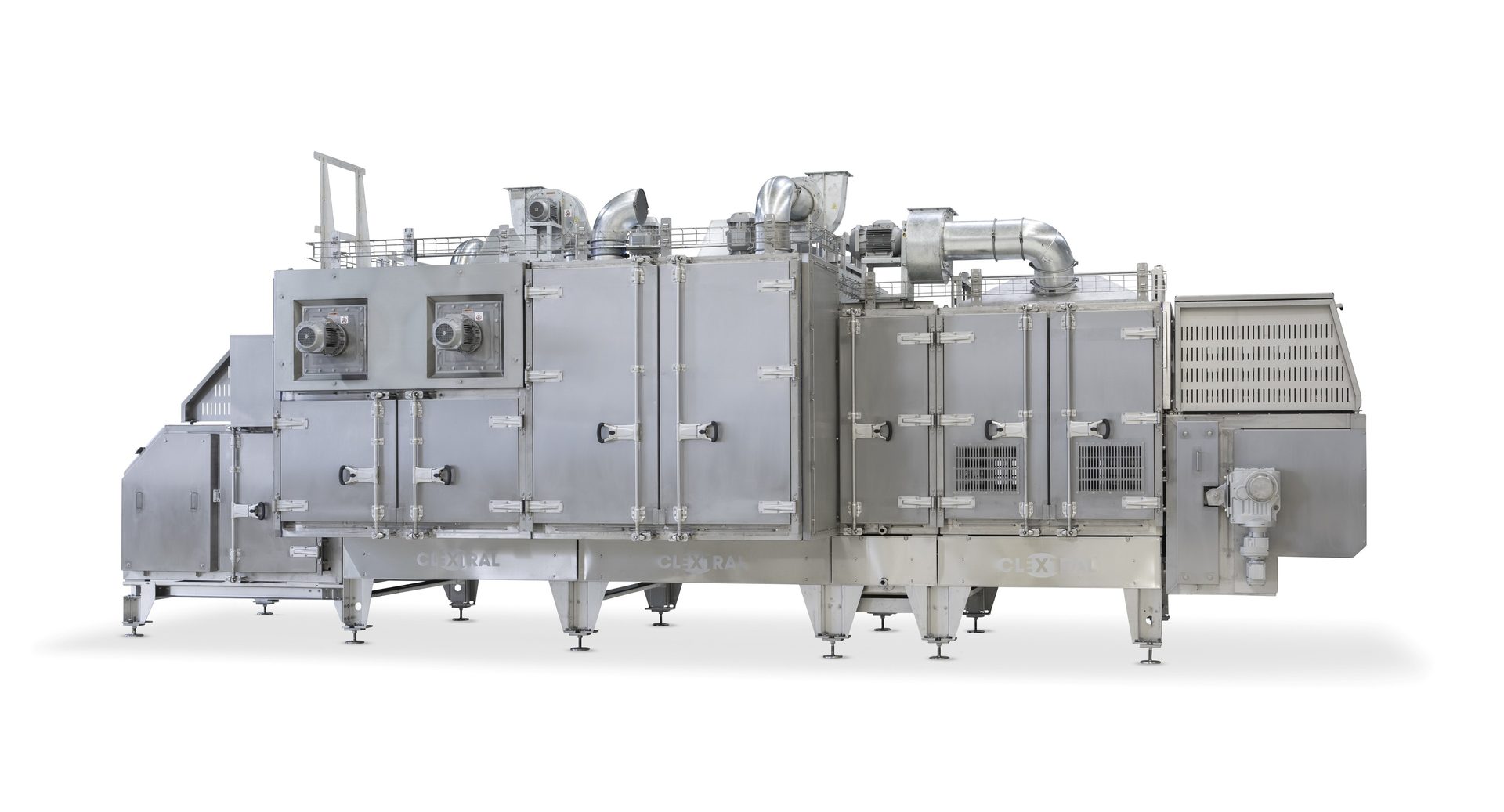Along the same lines, AMF has been following the trend toward using green hydrogen to heat ovens, relying on renewable energy sources such as solar and wind, Domeniucci says. “You can take that energy from electrolyzed water and create hydrogen and oxygen,” he says. “You take the hydrogen, compress it, and store it, and deliver it by truck. AMF has developed a hydrogen burner that can be retrofit into most direct-fired ovens. You can run it as a hydrogen burner or a gas burner, or run it as a blend.”
AMF planned to do its first in-plant testing of this technology at the end of August, Domeniucci adds. “The real holdup has been getting the materials we needed for the burner,” he says.
AutomatioN
While automation has been on the rise in the snack and bakery industries, certain segments have moved along more quickly than others, Domeniucci says. “If we talk about strictly high speed, hamburger buns, or white bread, that’s already very automated,” he says. “With a smaller wholesale baker, making 40 different products, it become more difficult.”
The pandemic and labor shortages have accelerated the movement toward automation across the board, including within ovens and proofers, says Jerry Barnes, vice president in the North Carolina engineering office at The Babb Group, Raleigh, North Carolina.
“We’re finding that end users are looking for ways to automate as much as possible,” he says. “An oven is fairly automated already, but in the rest of the bakery, we’re seeing a lot of interest in applying automation and areas the typically you’d have had teams of people.”




